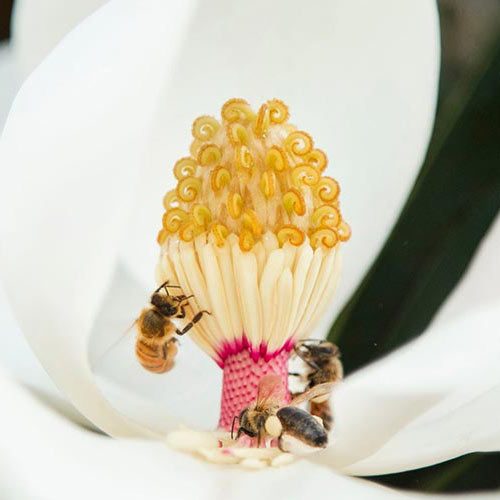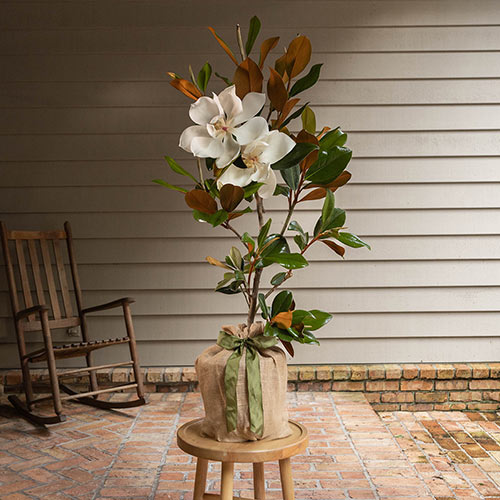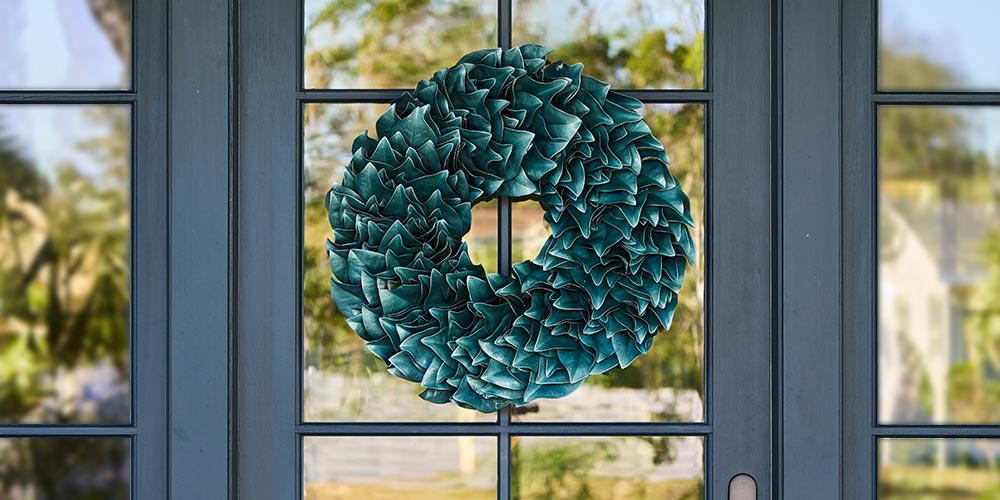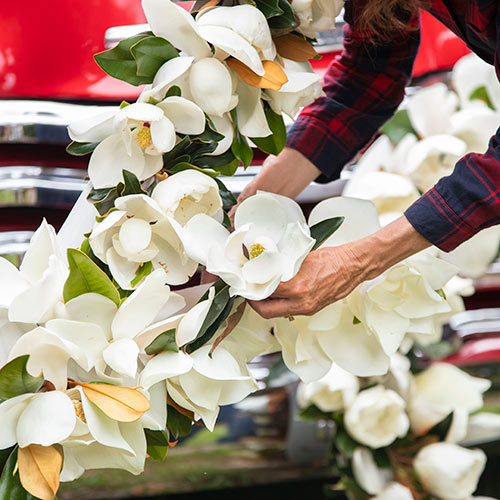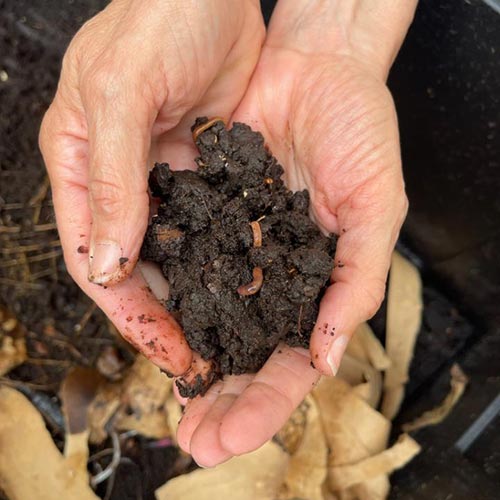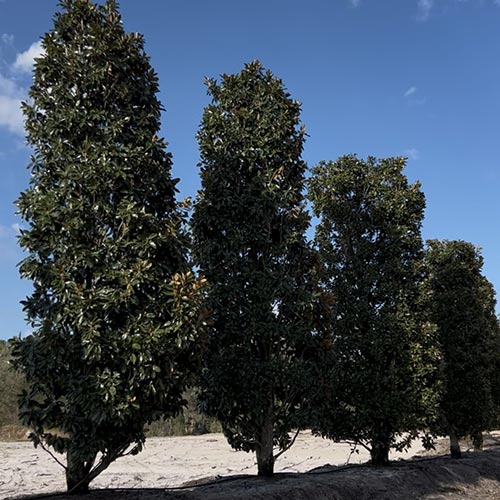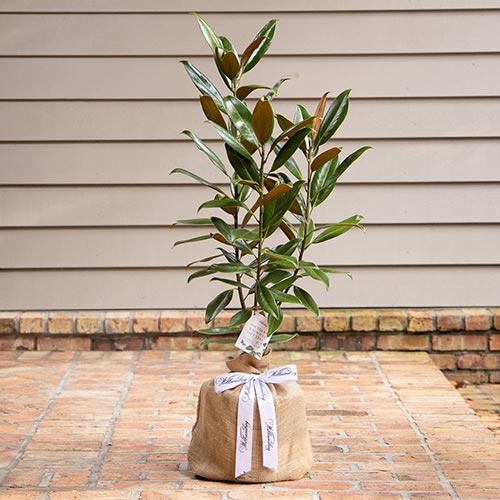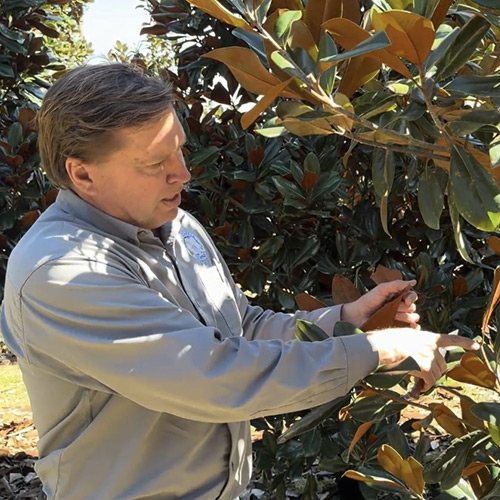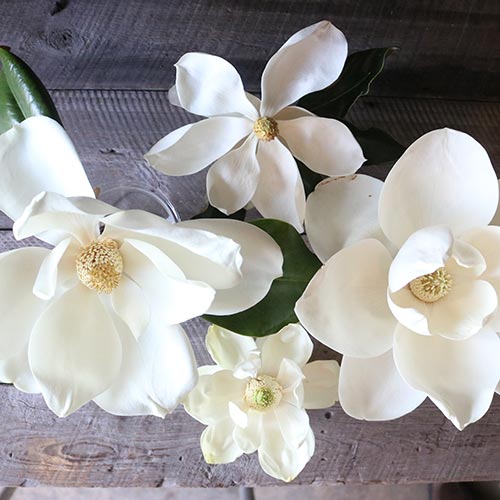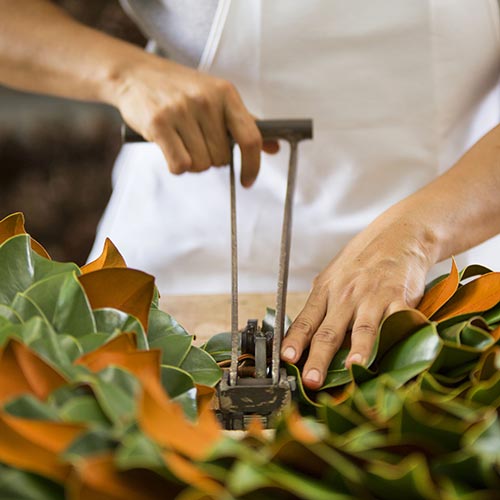Winter Magnolia Care: Pro Tips for Healthy Trees
January 24th, 2024
Caring for plants is one of the most rewarding hobbies a person could ever keep. We’ve said it before and we’ll say it again – nature is the gift that gives back. Whether you’re a veteran gardener, a self proclaimed plant parent, or you’re a newly converted plant enthusiast, we’re here to help you (and your plants) thrive.
Wintertime is a scary season for a lot of plant lovers. It’s cold, it’s dark, and it’s windy. Just like us, your trees behave differently during these conditions, so they have different care requirements.
Our specialty as a company is in tree cultivation – starting with magnolias. So we’re going in depth on everything you need to know about caring for your Magnolia tree in the winter. Most of the information here also applies to other kinds of trees as well, so you can give your whole garden the love it deserves!
Know Your Tree
Because they’re one of the oldest types of tree on earth, magnolias have evolved so many species. No matter what species you’re working with, trees can be separated into two main categories: deciduous and evergreen.
Evergreen
If you’re new to plant terminology, here’s the breakdown: evergreen trees do exactly what the label says – they stay green. Always. No matter the season, they keep verdant leaves on their branches. Trees like cedars, firs, and other popular Christmas trees are perfect examples. The Southern Magnolia, or Magnolia Grandiflora, is also an evergreen.
Decidious
Deciduous trees are the trees you think of when you imagine a beautiful fall forest. These trees cyclically shed their foliage when temperatures cool in an effort to conserve their energy and nutrient resources during the winter. The leaves change color as the leaves cease their photosynthesis process, and then they drop. When spring comes, the greenery regrows as nutrients and other resources are available again with warmer temperatures. Oaks and maples are common examples of deciduous trees. Star Magnolia, Saucer Magnolia, and Magnolia Ann’s are all deciduous varieties of magnolia, too.
Why It’s Important
Even though deciduous and evergreen varieties of magnolia have similar requirements during the winter, you can expect to see slightly different behaviors from each type.
Decidious
For deciduous varieties, good news! You really don’t need to do much for them. Once the tree drops its foliage, it’s in energy conservation mode – almost like the hibernation phase some animals experience. Trees lose energy and water through their leaves. If the tree has no leaves, its water retention is excellent. Because of this, it’s a good idea to reduce the amount of water you give the tree pretty drastically here.
Evergreen
Evergreen magnolias also prefer less water during the winter. It’s normal to see some yellowing of the leaves, so keep in mind that it’s just the tree conserving energy. Evergreen trees do drop leaves periodically to make room for new, healthy growth. Seasonal yellowing and some dropping is healthy and completely non-threatening to the tree. During these colder and shorter days, magnolias will not grow new shoots and leaves, but will continue to grow roots.
The Number One Mistake Growers Make: Overwatering
If your magnolia (deciduous or evergreen) is planted in the ground, the water it gets from seasonal rains and snows is more than sufficient. In other words, don’t turn on the sprinklers. Your tree’s root mass is hard at work, continuing to grow below the surface to obtain more water and energy, even if you don’t see branch growth.
If you haven’t seen any rainfall or snowfall in about three weeks, sure, give your tree a drink. Otherwise, leave it alone.
A special note: if your magnolia tree isn’t established – meaning it’s not planted in the ground and you’re keeping it in a container – you still need to reduce its water consumption. However, you’ll need to be mindful of how often you water it. As always, use the finger test. Bone dry soil needs a splash of water. If the soil is damp to the touch, put the watering can down.
Again, watering your magnolia in the winter about once every three weeks should be sufficient if your tree isn’t getting any natural precipitation (snow counts!).
Bundle Up!
It’s easy to forget, but plants can get too cold. The best gardeners check out the USDA’s Plant Hardiness Map so they know exactly how tolerant their leafy friends are during the winter months.
Container-planted/non established plants are the easiest to manage in the winter. Simply move them into a garage, porch, or indoors altogether. They’ll be happiest by a sunny window. We especially recommend this placement for young, small Southern Magnolias and for citrus trees.
Keeping established trees warm during the winter requires a little more creativity. Frankly, if it’s a tree, it’s going to be difficult to cover. We recommend wrapping the trunk all the way down to the ground with a thick blanket or some other form of insulation. A sheet or tarp over smaller trees’ branches goes a long way towards keeping it warm, too.
Depending on the layout of your yard, consider giving your tree its own heat source. This may look like growing the tree in a side yard, next to your home’s HVAC unit or water heater. A lot of southern folks choose to plant their magnolias in a sheltered location, like a side yard, so the tree is shielded from harsh winter winds.
It’s important that you do everything you can to prevent your magnolia tree from getting frostbite. If the plant survives, the dead branches need to be removed and pruned back before the tree puts out again.
Springtime Success: Pruning and Fertilizing
Since your magnolia tree devotes most of its energy to expanding its root mass during the winter, it’s prime time to fertilize and prune your tree.
Once the tree makes it through late winter, it’s time for corrective pruning. Late winter and early spring while it’s still chilly is the best time to prune. If your tree suffered any frostbite during the winter, the affected areas need to be removed from the tree. You’re also able to shape the tree and tidy up any unruly branches at this time.
In late winter/early spring, we recommend giving your magnolia tree (or any tree really) the gift of fertilizer! Slow release fertilizers in the 4-6 month range are best applied at the end of your cold months. A general tree & shrub fertilizer mix fits most trees. As professional growers, we like to use an 18-5-10% mix (the percentages of nitrogen, phosphorus, and potassium in the fertilizer), which really gives the tree a good base.
What questions do you have for us about caring for magnolias in the winter? Send us an email and get in touch – we’d love to hear from you!
Recent Articles



